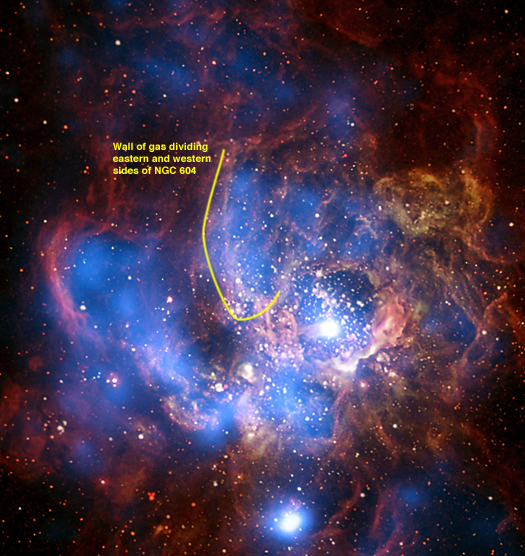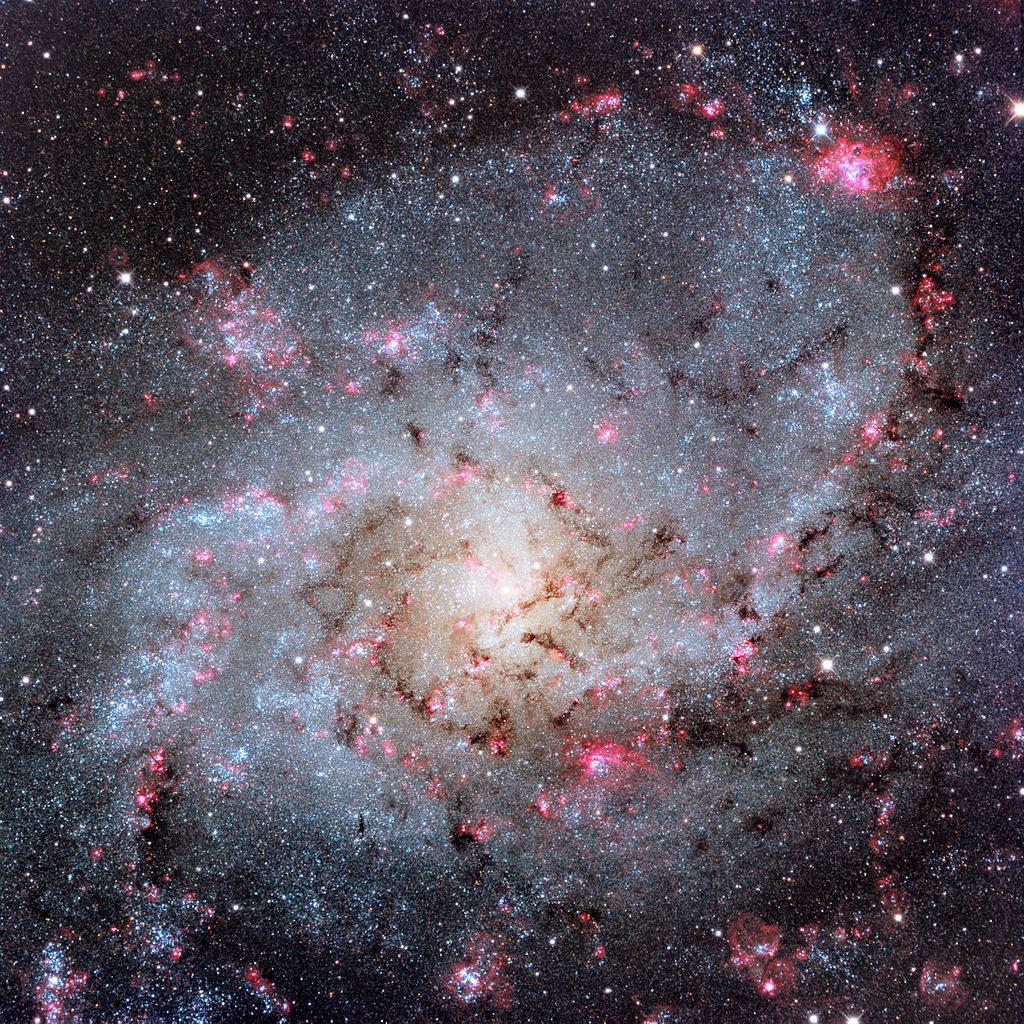I have two favorite images of NGC 604. Today's APOD is not one of them.
Let's start with the Chandra portrait of NGC 604:
Possible location of the Chandra bubbles in the APOD.
Maybe it's just the right-hand bubble that is seen in the Chandra image.
Chandra X-ray Observatory wrote:
This composite image from Chandra X-ray Observatory data (colored blue), combined with optical light data from the Hubble Space Telescope (red and green), shows a divided neighborhood where some 200 hot, young, massive stars reside.
However, there is a difference between the two sides of this bifurcated stellar city. On the western (right) side, the amount of hot gas found in the bubbles corresponds to about 4300 times the mass of the sun. This value and the brightness of the gas in X-rays imply that the western part of NGC 604 is entirely powered by winds from the 200 hot massive stars.
The situation is different on the eastern (left) side of NGC 604. On this side, the X-ray gas contains 1750 times the mass of the sun and winds from young stars cannot explain the brightness of the X-ray emission. The bubbles on this side appear to be much older and were likely created and powered by young stars and supernovas in the past.
Wow! We are witnessing how star formation is progressing from one part of a giant molecular cloud to another.
All right! My second favorite picture of NGC 604 is one by Hubble:
I was disappointed when I first saw the Hubble portrait of M33, because I thought that the picture was so overwhelmingly yellow and monotonous. I was used to seeing M33 with a lot of blue stars and pink nebulas, the way it looks in the picture by Adam Block... wait... what's that tiny blue object at upper right in the Hubble image?
It's NGC 604! It is!

The Hubble picture really puts NGC 604 in its place. It is so small compared with M33 itself, but it stands out incredibly.
Ann
 NGC 604: Giant Stellar Nursery
NGC 604: Giant Stellar Nursery



